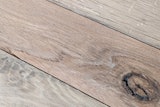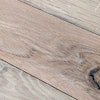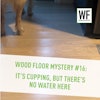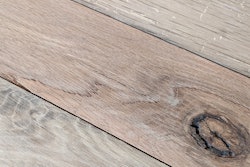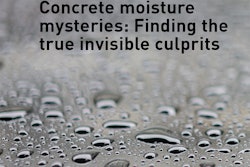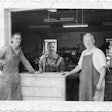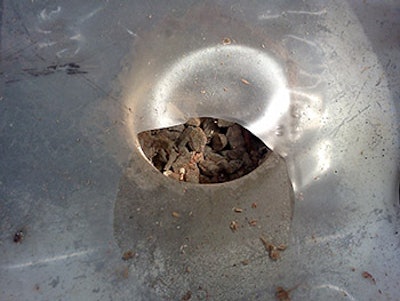
The Problem
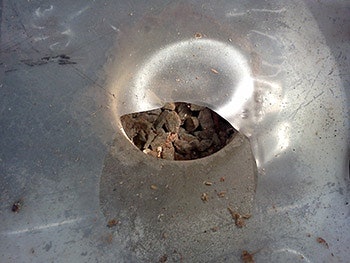
I was called to repair a gym floor previously installed at an elementary school here in the Pacific Northwest. The entire gym floor showed signs of cupping; however, there was an area just outside one of the keys on the basketball court where the cupping was more significant and the floor, when stepped on, felt as though it were starting to lift from the concrete subfloor.
The Procedure
The new elementary school and the gym floor had been completed in the summer. The strip maple flooring was installed over a concrete slab overlaid with 6-mil poly and two layers of 1/2-inch plywood stapled together with rubber cushions spaced 1 foot on center. The wood floor was sanded and finished with four coats of waterborne gym finish. Several months later, in winter, there was a roof leak, but there was no evidence of cupping at that time. I was called in when the cupping appeared in the spring. Everyone at the school was convinced the roof leak was causing the moisture issue.
The Cause
As I drove to the school, I could see it was located at the base of a mountain. I noticed there was a lot of standing water in an adjacent field. It hadn't rained in awhile, but in this area in spring, there is snowpack runoff from the mountains, and it was apparent that the water table in the area was very high.
In the gym, the cupped area seemed to fan out from the middle of the floor toward the interior wall of the gym. The maple flooring moisture readings ranged from 12-15%. I removed an area of maple most severely affected and moisture-tested the subfloor. The readings ranged from 25-30%. I realized that the high moisture levels were contained to one spot on the floor. As I started removing the second layer of plywood subfloor, I could see black holes where the staples penetrated the first layer of plywood. Removing the first layer of plywood, I noticed it was black on the underside, indicating excessive moisture.
Once the plywood subfloor was removed, I found the source of the moisture: a hole in the concrete and vapor retarder. Typically, when we install wood flooring in a gym, we plot out the game line grid and core through the flooring down into the slab and install the anchors for the volleyball posts. At least one of the holes had been cored in the wrong spot. When the groundwater increased in spring, it came up through the hole in the slab.
How to Fix the Floor
There were no visible signs of standing water or moisture droplets under the poly at the time the flooring was removed, so the school board decided to fill the hole with a fast-setting grout and overlay the area with new poly. The area was re-covered with new plywood, and the maple was spliced back in. The area of approximately 150 square feet was re-sanded and re-finished, and game lines were re-painted. There was still visible cupping throughout the floor, but it was important that there was no further loss of service of the gym. The intention was to monitor the cupping in the gym and re-address the floor in the summer.
In the Future
When it was discovered that the hole was cored in the wrong spot, the contractor should have filled the hole immediately and covered the affected area with new poly. Since there was still visible cupping throughout the floor I suspect that there might be more than one hole that was cored incorrectly.
More photos:
 |
 |











